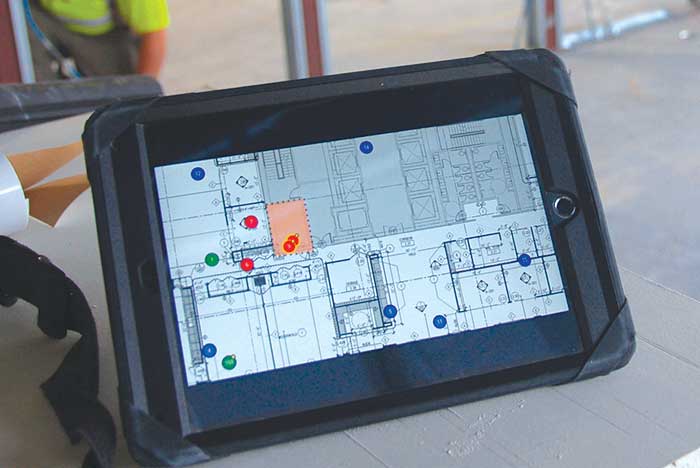Health care construction builds on the spirit of innovation

Workers can now use on-site technology to increase quality and productivity.
Trying to design and build a new hospital, ambulatory care center or facility of any type that meets present and future health care delivery needs is a tall order.
 |
2017 Trends: Design+Construction |
| Next: Designers exercise flexibility and creativity |
|
|
Technology and medical care evolve so quickly now that today’s state-of-the-art risks become yesterday’s news. It’s a challenge to anticipate the changes, designers admit.
That’s where innovation and creativity enter the picture. While they acknowledge what they are up against, the same designers and builders who are witness to the endless challenges also see opportunity.
“It’s actually an exciting time in the field,” says Andrew Quirk, senior vice president of health care and national director of the centers of excellence, Skanska, Franklin, Tenn.
“Everyone has been dabbling in innovation and trying to be first to the market. This really is the first year that innovation has taken hold on job sites and is helping to drive projects and how they’re being built,” Quirk says.
A member of one top health care design firm contends that the innovation rules are a little different and more forgiving for health care facilities. With its innate complexities and the need to meet myriad codes and standards, health care facilities lean toward the side of caution when change is at stake.
“Innovation in health care design takes a bit longer to shift and adopt. Something may have been innovative when it was introduced five years ago, yet still be considered innovative today because adoption across the field can take longer than with other building types," says Breeze Glazer, sustainability design leader, Perkins+Will, New York City.
True innovation is more than incorporating the latest technology anyway, says Jodie Lesh, senior vice president, strategic planning and new ventures, Kaiser Permanente, Oakland, Calif.
“There’s now a lot more need for innovation on consumer engagement, patient engagement and environmental sustainability,” she says.
While the spirit of innovation plays a role in change, it involves inherent risk. The road to real innovation and progress requires educated exploration and discipline that can be taught and learned, Lesh says.
“Innovation is not just about good ideas. It’s a social process and involves engagement with our consumers, members, patients, ourselves and with people outside health care on how we can leverage the process. It’s about understanding people's needs, being able to articulate them and, ultimately, being able to address them,” Lesh says.
The stories that follow describe what top designers, builders and health systems are doing to ensure that health facilities are ready for a future of change through the practical, judicious use of innovation.




